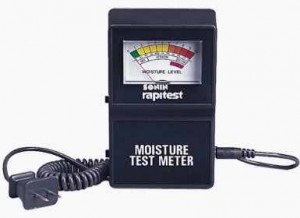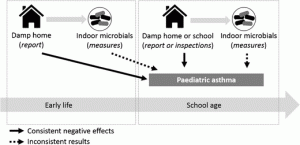For those interested in microbiology of the built environment this paper seems definitely worth checking out: Indoor microbiota in severely moisture damaged homes and the impact of interventions. Jayaprakash B, Adams RI, Kirjavainen P, Karvonen A, Vepsäläinen A, Valkonen M, Järvi K, Sulyok M, Pekkanen J, Hyvärinen A, Täubel M. Microbiome. 2017 Oct 13; 5(1):138 Abstract …
Microbes indoors DNA metabarcoding to assess indoor fungal communities: Electrostatic dust collectors and Illumina sequencing – Steffi Rocchi – Journal of Microbiological Methods ($39.95) Our study aimed to evaluate metabarcoding and bioinformatic analysis resulting from calibrated samples and samples collected by an electrostatic dust collector (EDC) in dwellings with no moisture problems. Thus, the fungal communities of …
There is a recent review paper that may be of interest: Pediatric Asthma and the Indoor Microbial Environment | SpringerLink Abstract The global increase in the prevalence of asthma has been related to several risk factors; many of them linked to the “westernization” process and the characteristics of the indoor microbial environment during early life …
Here is a new set of papers that came out in the past week(s) that I posted at MicrobiomeDigest, but that I also wanted to share here. Three of these papers are from BMC’s Microbiome journal, which recently has published several other built environment microbiology papers, so it’s worth checking out. Microbes in buildings Moisture …
You can download the database of over 360 publications that report characteristics of the indoor environment along with the microbes found in the studies. Each publication is entered as a record and includes citation, abstract, keywords, organisms, substrates, and environmental conditions as reported by the authors. The database in MS Access format is searchable for …
Many indoor environmental investigators have attempted to use volatile organic compounds (VOCs) emitted by microbes as an indicator of the presence or potential health relevance of the indoor microbiome. These compounds emitted by microbes are generally referred to as MVOCs. The airborne concentrations of MVOCs is usually too low for characterization by the usual indoor …
The next of the new Sloan foundation funded projects in the field is being undertaken by Jordan Peccia at Yale University and is entitled “Qualitative Building Moisture Characteristics and Microbial Diversity” Project description below: There exists a significant gap in our understanding of how the building environment mediates human exposure to bacterial and fungal diversity. …
(The following is a guest post by James Scott, from the University of Toronto) The receding waters of hurricane Sandy left a trail of destruction along the eastern seaboard of North America – demolishing homes and businesses, flooding neighborhoods and transportation systems, disrupting electricity and water supplies. The havoc wrought by Sandy poignantly affirms the brutal …
I’m currently at Indoor Air 2011 sitting in on the Sloan Foundation-sponsored sessions on microbiology of the built environment. There are a number of great talks taking place and we hope to post some more information in the form of slides later. We’ll probably also post a more formal write-up about some of the discussions …



